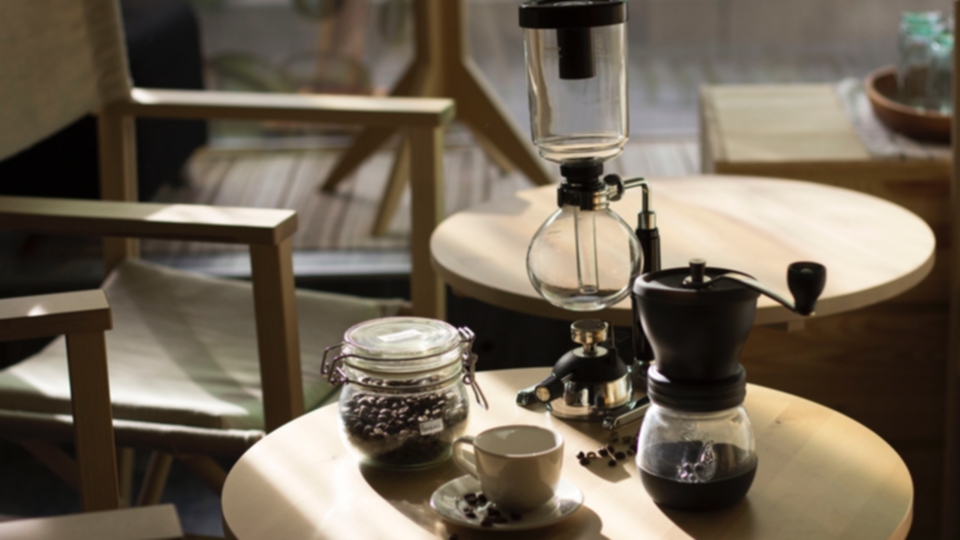The Syphon Brewing Guide And History
Usually, the immersion coffee brewing method and the drip coffee brewing method are two different worlds, with less overlap. The siphon pot (also known as vacuum pot brewers), a unique-looking coffee appliance, can create a thick yet clear coffee.
Siphon Pot: An Appliance For Brewing By Applying Scientific Principles
How does the siphon pot work? When the water sits on the bottom of the siphon pot and heats up, the gas will begin to rush out. At this time, the vacuum state of the bottom part will cause the water to move to the upper part. When the fire in the lower part goes out, the air at the bottom begins to cool down, allowing the coffee to return to the lower part. Although it sounds complicated, it’s not that difficult to complete the operation once (of course, it’s necessary to make the siphon coffee good and stable. Very difficult).
The History
The story of the siphon pot originated from a group of people who drank bad coffee. The earliest version was the siphon pot invented by Loeff in Berlin, Germany, in the 1830s. After that, the siphon pot swept all of Europe, and everyone saw its advantage.
The original design issued a large number of patents to improve the performance of the appliance. Still, the most noteworthy is the French Balloon designed by Mrs. Vassieux in 1841, which is very similar in appearance to the siphon we use today.
The balanced siphon pot (Belgian pot) is another important invention in the history of the siphon pot. Although its origin is in the middle of the 19th century, its operation principle is similar to that of the French siphon pot. The only special thing is that it can extinguish the heat source by itself. The two parts of the balanced siphon pot are placed side by side, and when the water is transferred to another container, the balance system designed on the counterweight or spring is activated due to the weight change, which triggers the extinction of the heat source.
By the end of the 19th century, the siphon pot was promoted to the United States, and it was not produced locally in the United States until the 20th century. In 1915, Ann Bridges and Sutton of Massachusetts used the name Silex to sell siphon pots. They also used new heat-resistant Pyrex glass, which means that, unlike previous siphon pots, Silex is not easy to break.
You can read more ebooks about coffee from gumroad.com
What Can You Brew From A Siphon?
This method combines soaking (such as French press) and drip brewing (such as V60), which can brew a strong and clear taste of coffee. The siphon pot is very suitable for the quality of coffee, and its balance of flavor and taste makes siphon coffee so unique.
This article uses a siphon pot with Columbia Manor's Cardura coffee, with bright fruit acidity and a mild hazelnut and toffee aroma aftertaste.
How To Make Coffee With A Siphon?
First, boil in water and clean the filter. Place it on the bottom of the upper component and hook the filter to the bottom of the glass tube. Add 510ml of boiling water to the lower component and turn on the heat source. Place the upper component above the lower component.
When the water rises from the lower component to the upper part, grind 34 grams of coffee beans and use a medium-fine grinder that is slightly finer than the hand brew to brew.
Once all the water has risen to the upper component, reduce the heat source as much as possible so that the water will not drop. Stir a few times to cool the water in the upper component(the ideal temperature is between 90 and 96 degrees).
Pour the coffee into the water in the upper component and start the timer, and use a stirring rod or spoon to stir the coffee powder as far as possible to make all the coffee powder soaked with the smallest degree of turbulence.
Let the coffee brewing process continue uninterrupted for about 90 seconds (the time may vary depending on the brewing recipe and maybe shorter), turn off and remove the heat source, and stir the coffee a few more times.
When the coffee in the upper component begins to cool down, it will begin to flow to the lower component, which may take tens of seconds. When the descending process is completed, the coffee in the lower component will bubble due to the air inhaled by the remaining coffee.
After removing the glass on the upper component, let the coffee cool down (the temperature of the coffee brewed in the siphon pot is usually higher). Some people use Chemex to assist at this time. Finally, don't forget to maintain the filter after cleaning the upper component. If you use a filter cloth, you need to boil it in hot water and place it in the refrigerator after cooling down so that there will be no residual odor and prevent the filter cloth from drying out and becoming brittle.
Then you can enjoy a cup of rich but clear siphon coffee!

